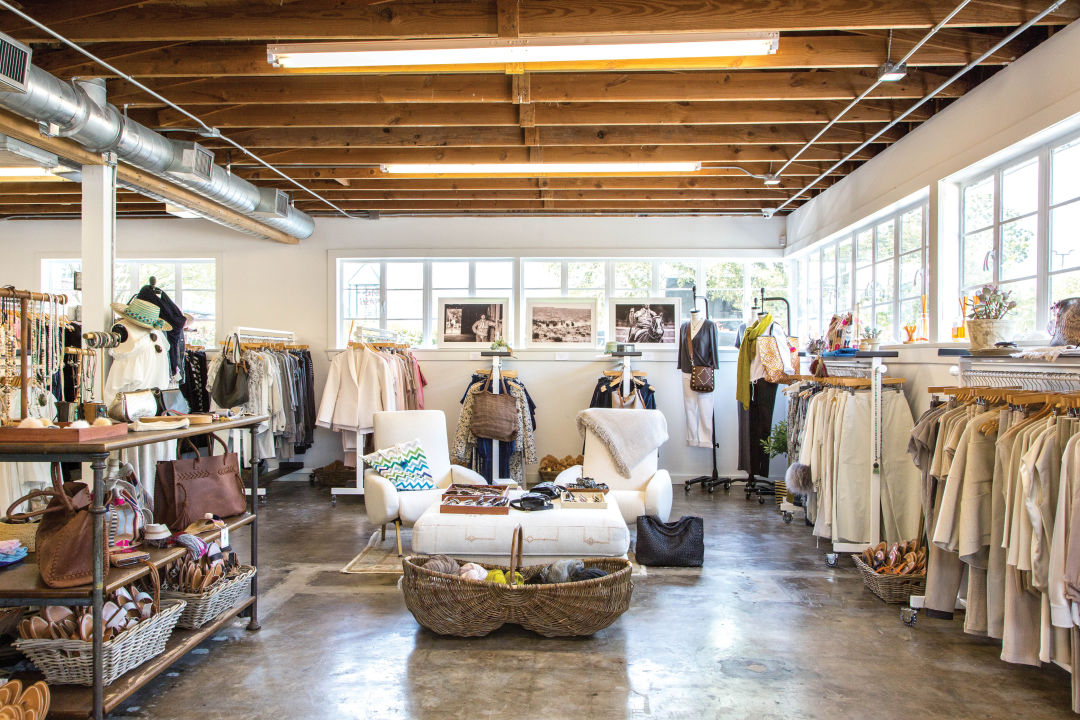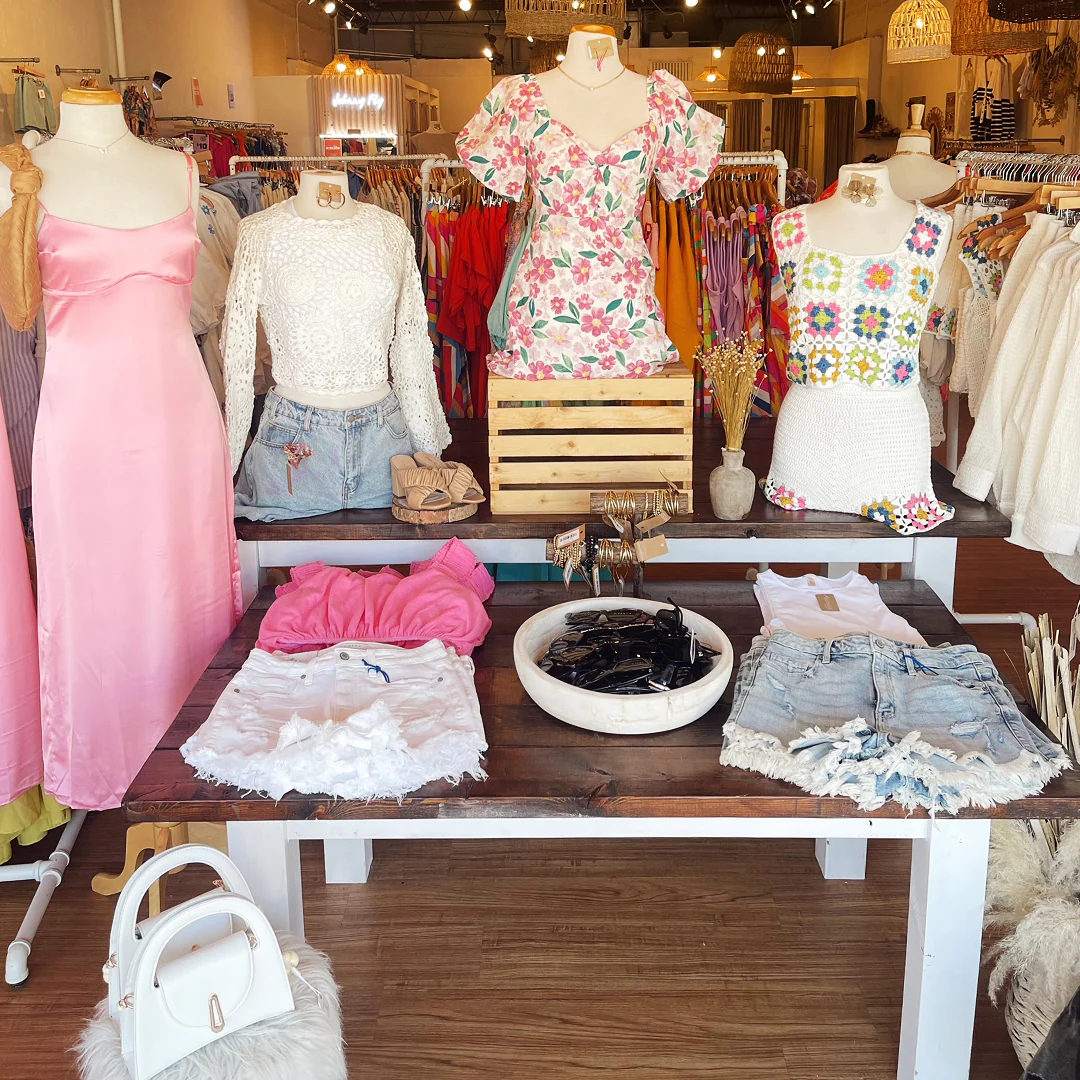Discover the most recent Trends in Boutique Fashion for Every Period
Discover the most recent Trends in Boutique Fashion for Every Period
Blog Article
Lasting Fashion: How Eco-Friendly Apparel Is Shaping the Future of Design
As the fashion market encounters raising scrutiny over its ecological influence, the surge of lasting style supplies a promising option that straightens design with ecological responsibility. Using ingenious materials such as plant-based textiles and recycled fibers, together with sophisticated approaches like digital and 3D printing, developers are redefining what it implies to be stylish in the modern age. Concurrently, the expanding appeal of upcycling and second hand culture is promoting a shift in the direction of a circular economy. Yet, just how does this movement really affect the future trajectory of fashion, and what obstacles lie ahead in its extensive adoption?
Ingenious Sustainable Materials
As the style market grapples with its environmental impact, ingenious lasting materials have actually arised as an essential service for lowering environmental impacts. These materials not just minimize reliance on fossil fuels yet likewise reduce harmful pesticide usage and water consumption.
Along with plant-based materials, developments in biofabrication have resulted in the advancement of lab-grown fabrics. Mycelium leather, stemmed from mushroom origins, provides a versatile and eco-friendly choice to animal leather. Its production results in significantly reduced carbon emissions and water usage, making it an extra sustainable option for fashion developers looking for to straighten with environment-friendly methods.
Recycled products are additionally getting traction, with polyester made from recycled plastic bottles standing for a substantial development. This advancement not just draws away plastic waste from landfills and seas yet additionally minimizes power intake compared to generating virgin polyester. Together, these materials highlight the capacity for a more sustainable apparel industry, leading the way for eco aware design and production.
Eco-Conscious Manufacturing
Structure on the technologies in lasting materials, the garment industry is additionally re-evaluating its production processes to better lower environmental influence. Trick techniques consist of decreasing water usage, lowering carbon exhausts, and getting rid of dangerous chemicals. By embracing closed-loop systems, manufacturers aim to recycle water and energy efficiently, significantly lessening waste. The combination of renewable energy sources, such as solar and wind power, right into manufacturing centers better cuts dependence on fossil fuels.
An additional vital facet is the decrease of harmful chemicals commonly made use of in dyeing and ending up fabrics. Eco-conscious manufacturers are moving in the direction of plant-based dyes and waterless dyeing innovations, which not just secure local ecosystems but also improve worker safety. Developments like digital printing decrease material waste and energy consumption, supplying a cleaner alternative to traditional methods.
Furthermore, openness and traceability have actually become extremely important. With the development of blockchain innovation, firms can now give in-depth insights into their supply chains, making sure environmentally pleasant and moral methods at each action. This openness constructs customer trust and motivates brand names to keep high sustainability criteria. As the need for eco-conscious items expands, manufacturers are urged to introduce, ensuring that the future of style is both sustainable and elegant.
The Surge of Upcycling
Upcycling, a transformative practice in lasting style, includes creatively repurposing thrown out materials right into brand-new, high-grade products. This innovative approach not just decreases waste but also diminishes the demand for resources, consequently view website decreasing the ecological impact of clothing production. By rebuilding and reimagining existing products, designers and fashion brands have the ability to infuse originality right into their collections while promoting environmental obligation.

Moreover, the upcycling activity has actually encouraged independent developers and little organizations, who frequently lead in advancement due to their dexterity and creativity. By capitalizing on the bountiful availability of unused products, these entities add to a circular economic climate, demonstrating that fashion can be both stylish and lasting. With upcycling, the industry takes substantial strides in the direction of a much more mindful and liable future.
Thrift Society's Influence
The growing second hand culture significantly improves the landscape of lasting fashion, stressing the relevance of conscious usage. This cultural shift urges consumers to accept secondhand garments, thereby minimizing the demand for brand-new garment production and lessening ecological impact. Second hand purchasing not only expands the lifecycle of apparel yet also reduces the carbon impact connected with manufacturing, see post carrying, and throwing away apparel.
A vital facet of second hand society is its democratization of style. By providing a wide selection of designs from different periods at affordable prices, second hand stores make fashion easily accessible to a wider target market. This ease of access fosters a feeling of uniqueness and creative thinking, as consumers mix and match distinct pieces to curate tailored wardrobes without adding to the rapid style cycle.
Moreover, thrift culture promotes circularity in style, straightening with the concepts of a circular economic situation. As even more developers and customers welcome thrift society, the style industry is obliged to adapt, incorporating sustainable practices to fulfill the expanding demand for eco-conscious choices.

Future Trends in Style
Fashion's development is increasingly formed by sustainability-driven campaigns and technological technologies. One prominent trend is the surge of digital fashion, where virtual garments can be worn in enhanced fact settings, dramatically minimizing textile official source waste.
Furthermore, the integration of blockchain modern technology offers brand-new possibilities in openness and traceability, enabling consumers to confirm the sustainability qualifications of their garments. boutique fashion. This makes sure responsibility in supply chains and promotes honest sourcing techniques. 3D printing is yet another development that promises to reinvent producing processes by enabling on-demand production, consequently minimizing excess supply and waste
As these innovations mature, they are positioned to transform the style landscape, combining design with sustainability. The future of fashion, consequently, exists in a seamless blend of modern technology, development, and ecological responsibility.
Verdict
The transformation of the style market via sustainable techniques shows a crucial change in the direction of ecological liability. This development not only straightens fashion with eco-friendly sustainability however likewise sets a criterion for future fads concentrated on duty and development.
As the style industry deals with enhancing examination over its ecological effect, the increase of sustainable fashion supplies a promising option that straightens style with environmental responsibility.As the style sector grapples with its ecological effect, ingenious lasting materials have actually emerged as a vital solution for decreasing environmental impacts. With each other, these products highlight the possibility for an extra sustainable style sector, paving the means for eco aware layout and production.
Structure on the technologies in sustainable products, the fashion sector is additionally re-evaluating its production procedures to additionally lower environmental impact. boutique fashion.Upcycling, a transformative technique in lasting style, entails artistically repurposing discarded products right into new, top quality products
Report this page